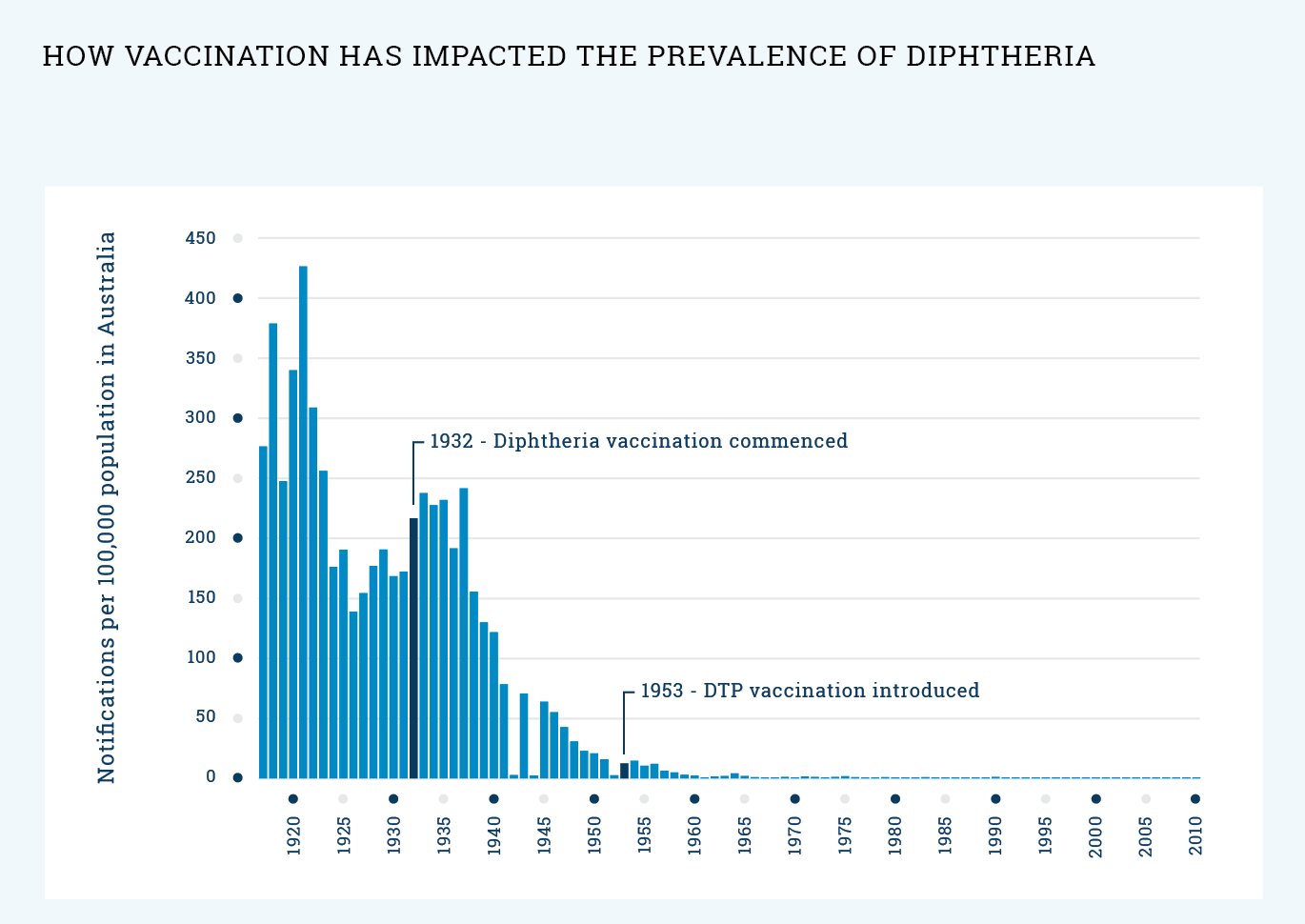Diphtheria
Key facts
-
Diphtheria is a very serious disease that causes breathing difficulties, heart failure and in some cases, death.
-
In Australia, diphtheria is now rare. Vaccination is recommended so that babies and children can’t catch diphtheria from people around them who have travelled to countries where the disease is still common.
-
Vaccines are the best way to protect your child from diphtheria.
On this page
- What is diphtheria?
- What will happen to my child if they catch diphtheria?
- What vaccine will protect my child against diphtheria?
- When should my child be vaccinated?
- How does the diphtheria vaccine work?
- How effective is the vaccine?
- Will my child catch diphtheria from the vaccine?
- What are the common reactions to the vaccine?
- Are there any rare and/or serious effects to the vaccine?
- What impact has vaccination had on the prevalence of diphtheria?
